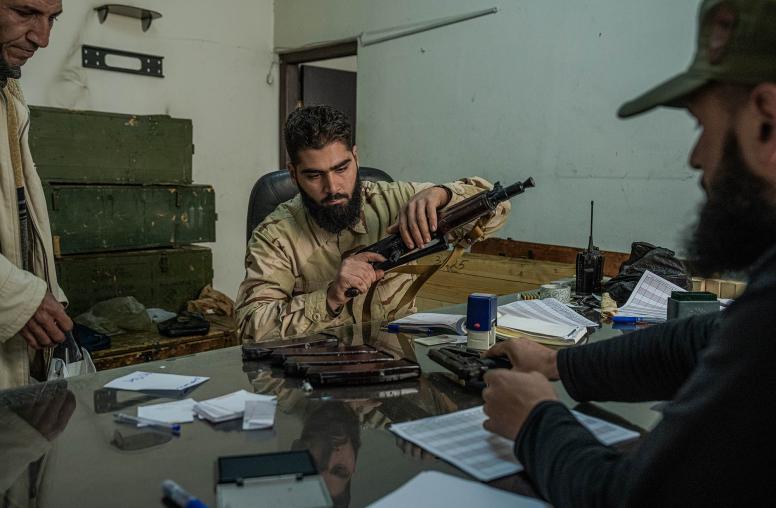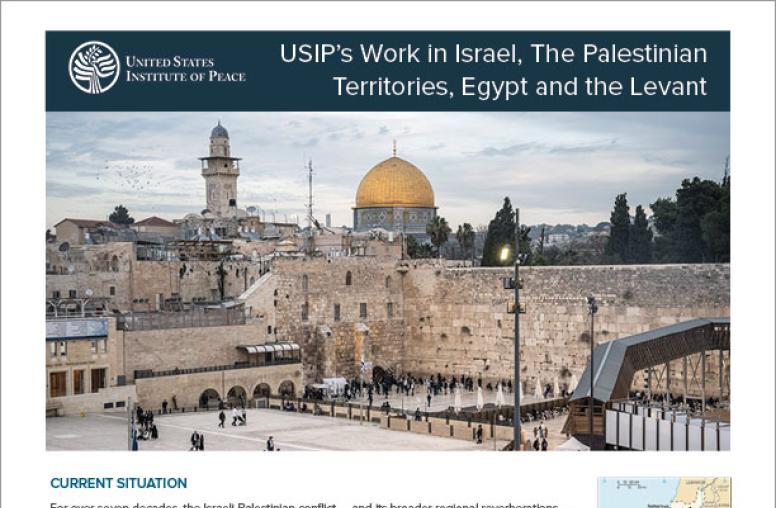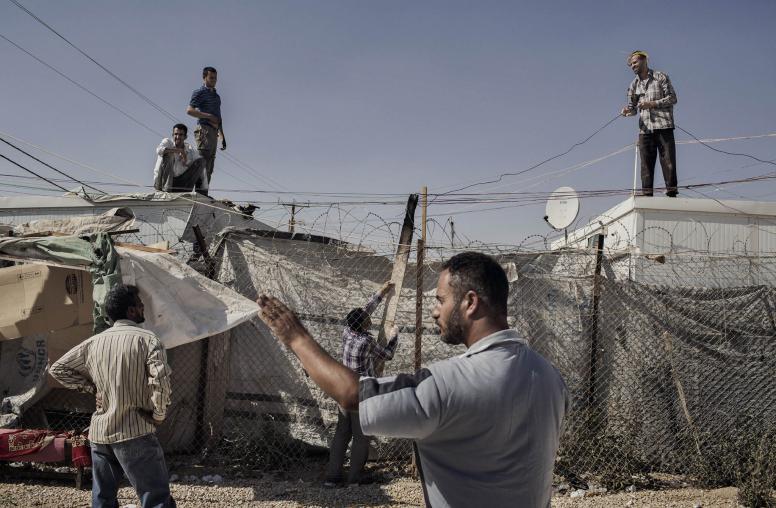Syrian Children’s Future Jeopardized in Education Too
The conflict in Syria has taken a devastating toll on Syria’s younger generation in many ways, not the least of which is the impact on their education and on their schools and teachers. The war has essentially decimated a key educational milestone the country achieved before the violence broke out.

In 2010, before the conflict broke out, almost all primary school-aged children in Syria were attending classes, according to a recent Save the Children report. Three years later, in addition to the death toll of more than 100,000 and psychological trauma for those who survived, more than 1 million children aren’t attending school at all. Of Syria’s five million displaced people, 2.5 million are children between 4-18 years of age, and half of those aren’t in school.
More than a fifth of Syria’s schools have been destroyed or are no longer accessible for education. The United Nations Office for the Coordination of Humanitarian Affairs (OCHA) estimates it will require $45 million to support the minimum education needs for Syrian refugees. As of June 2012, only $9 million of this funding had been received.
Amidst fighting, both the Syrian regime and the opposition have used school buildings for military purposes, including as barracks, command posts and detention centers, according to Human Rights Watch. The Syrian regime has conducted ground and aerial attacks on school buildings, as well as raids and arbitrary arrests of students. Even where schools have not been destroyed, parents keep their children home for fear of their safety. Nonetheless, Syrian children still want to be in school, fearing that their future ambitions will be impossible to achieve if they are unable to keep up with their education.
Schooling remains a priority that international organizations and aid groups, as well as Syrian expatriates, are trying to address both within Syria and in refugee camps along its borders, amidst the most challenging circumstances. Activists across Syria have started improvised, informal community schools and educational programs in mosques and homes across the country. There are dozens of unofficial schools set up along the Turkish border for Syrian refugees, and thousands throughout refugee camps and populations across the region.
These ad-hoc schools are often over-populated and lacking in funding for not only basic supplies but also for teacher salaries. In countries neighboring Syria such as Jordan, Turkey, and Lebanon, some Syrian refugee children have been able to enter local schools. But the numbers of children in need of education have increasingly created an unmanageable burden on host government and school systems.
A few Syrian universities are still able to operate, primarily in regime-controlled areas where there tends to be more consistent electricity and stability. A 29-year old physics graduate student told Andrea Glioti, reporting for Al Monitor, “My brother is still attending university classes in Homs, where power supplies are almost continuous.”
But many universities have closed, and many students, professors, and scholars have fled due to violence, financial constraints, and corruption. Universities in the United States are working to provide Syrians with opportunities for higher education and scholarship even while the conflict continues. Approximately 40 universities have joined a consortium led by the Institute for International Education to provide emergency scholarships for students and host scholars who have fled Syria.
UNICEF, the United Nations children’s agency, is setting up schools for Syrian refugees in the Za’atari refugee camp in northern Jordan, as well as classrooms in the Ramtha camp in Southern Jordan, but more needs to be done. “Education is one of the most effective ways to build an inclusive and open society,” said U.N. Special Representative of the Secretary General for Children and Armed Conflict, Leila Zerrougui, after a visit to Syria this month. “We cannot allow the next generation of Syrians to be illiterate.”
Within the next couple weeks around the United States, advertisements and newspaper circulars will announce back-to-school sales and discounts. Students will gather school supplies, receive homeroom assignments and begin preparing for fall courses.
In Syria, most schools will not be able to re-open until they are rebuilt or emptied of military and civilian occupants. Many students will be unable to return to school because of security problems or basic humanitarian needs. For much of Syria’s younger generation, another school year will be lost.
Rachel Brandenburg is a program officer for USIP’s Middle East Initiatives. Do you have a question about the ongoing violence in Syria? Submit your question to Rachel on the Global Peacebuilding Center’s Ask an Expert forum.


